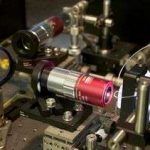Page 10927
Sep 15, 2016
Meet the nanobots that could combat cancer
Posted by Karen Hurst in categories: biotech/medical, nanotechnology
An international team have developed nanobots that travel in the bloodstream and tackle cancer from the inside.
Sep 15, 2016
Your Thoughts Could Activate a Tiny Robot Inside Your Own Brain
Posted by Karen Hurst in categories: health, nanotechnology, neuroscience, robotics/AI
Hmmm.
For the first time, Israeli researchers have developed a system that lets a human use brain waves to control nanobots in a cockroach. How could that help your health?
Sep 15, 2016
CRISPR: What Does Gene Editing Mean for the Future of Primal Living?
Posted by Karen Hurst in categories: bioengineering, biotech/medical, genetics
 By now, you’ve no doubt heard of CRISPR, the latest gene-editing tool sweeping research labs across the globe. It was first discovered in certain strains of bacteria, who use it as an important weapon against dangerous viruses. In bacteria, CRISPR identifies a virus that poses a threat, records the virus’ genetic data and imprints it onto RNA molecules. An immune enzyme called Cas9 grabs one of the RNA molecules and goes exploring. When Cas9 encounters a virus that matches the data on the RNA molecule, it latches on and slices the virus in half to prevent it from replicating and posing any threat.
By now, you’ve no doubt heard of CRISPR, the latest gene-editing tool sweeping research labs across the globe. It was first discovered in certain strains of bacteria, who use it as an important weapon against dangerous viruses. In bacteria, CRISPR identifies a virus that poses a threat, records the virus’ genetic data and imprints it onto RNA molecules. An immune enzyme called Cas9 grabs one of the RNA molecules and goes exploring. When Cas9 encounters a virus that matches the data on the RNA molecule, it latches on and slices the virus in half to prevent it from replicating and posing any threat.
Researchers have co-opted the CRISPR/Cas9 mechanism to edit genes. Instead of copying dangerous viral DNA sequences onto the RNA molecules, they can copy over any sequence they want to edit. And instead of Cas9 destroying viruses, it makes precise cuts and removes specific bits of genetic data from the designated sequence. This allows researchers to target and edit specific gene sequences with genetic data of their choosing.
Sep 15, 2016
Dark Web Criminals Supplying Forged Diplomas & Certifications
Posted by Karen Hurst in categories: biotech/medical, computing, education, employment, internet
And, we all have heard all of the horrorr stories of a botch surgery or treatment performed by a MD who was a fraud. Well, our friends on the Dark Web are at work again in supplying anyone willing to pay fake diplomas & certifications. The challenge is how do companies and agencies validate? Something to ponder as we all know hackers can also forge educational records as well.
Criminals on the Dark Web (a lawless, unregulated part of the Internet) are supplying fake diplomas and employment certifications to anyone with a few hundred bucks.
According to Israeli threat intelligence firm Sixgill, people are even hiring hackers to penetrate university computer systems to alter grades.
Continue reading “Dark Web Criminals Supplying Forged Diplomas & Certifications” »
Sep 15, 2016
A tight squeeze for electrons: Quantum effects observed in ‘one-dimensional’ wires
Posted by Karen Hurst in categories: computing, particle physics, quantum physics
Condensing electrons into Quantum Wires to advance QC on multiple devices as well as other areas of technology.
Researchers have observed quantum effects in electrons by squeezing them into one-dimensional ‘quantum wires’ and observing the interactions between them. The results could be used to aid in the development of quantum technologies, including quantum computing.
Scientists have controlled electrons by packing them so tightly that they start to display quantum effects, using an extension of the technology currently used to make computer processors. The technique, reported in the journal Nature Communications, has uncovered properties of quantum matter that could pave a way to new quantum technologies.
Sep 15, 2016
Programmable Biology Has Begun
Posted by Karen Hurst in categories: bioengineering, biotech/medical, genetics, life extension, singularity
Scientists have completed reprogramming DNA on the largest scale ever, making the concept of superhumans a reality while advancing Singularity.
Cloned embryo.
Most of us like the idea of superpowers. Though we may never have the strength of Superman, we could be made stronger, faster, and even better-looking, with total control over our genome, or genetic makeup. What about becoming disease-resistant, weight gain resistant, and even slowing down the aging process? This might be possible in decades to come, as geneticists are now getting ever closer to, not just removing and replacing genes, but rewriting entire genomes. It sounds like the realm of science fiction. Yet, consider that geneticists at Harvard recently recoded the genome of a synthetic E. coli bacteria. Prof. George Church and colleagues conducted the study.
Sep 15, 2016
Indian Delegation to Visit Russia For Leasing Yasen Class Submarine
Posted by Karen Hurst in category: nuclear energy
One of the world’s deadliest nuclear powered attack submarines, the Yasen-class’s inclusion will add deeper strategic depth to Indian Navy’s Blue Water Naval ambitions.
India is interested in renting the multi-purpose Project 885 Yasen class submarine from Russia. This is being seen as a sign of another forthcoming India-Russia collaborative venture for the construction of six new SSN for Indian Navy.
NEW DLEHI — A high-level Indian delegation will be visiting Russia shortly to finalize an agreement on renting the Yasen class submarine for the Indian Navy.
Continue reading “Indian Delegation to Visit Russia For Leasing Yasen Class Submarine” »
Sep 15, 2016
Burning Man meets TED: Silicon Valley’s creative tech parties arrive in Southeast Asia
Posted by Karen Hurst in category: media & arts
Exciting times in China.
Three stages, colorful lasers, live performances, video projections, and a secret after party. This is no music festival, it’s a technology event.
Slush, a non-profit movement that originated in Finland, has made a name for itself across the world for annual events that it describes as “Burning Man meets TED.” Speaker presentations, panel discussions, workshops, and pitches are held in a festival-esque setting instead of the traditional conference hall to urge greater engagement between start-ups, venture capital (VC) funds and investors.















